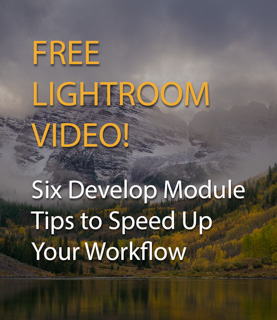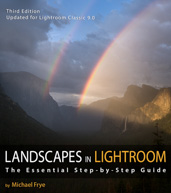In the Moment:
Michael Frye's Landscape Photography Blog
by Michael Frye | Jun 3, 2011 | Yosemite Photo Conditions
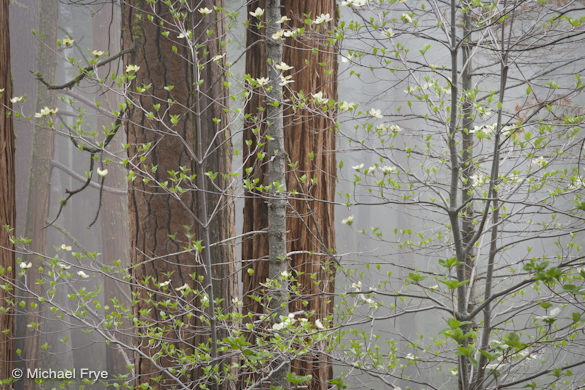
A) Dogwood, Pine and Cedar
On Wednesday morning Claudia and I woke early and headed up to Yosemite Valley. The sky was overcast, although the sun threatened to break through at times. After recording footage for a video I’m working on (more about that later), we decided to drive up the Wawona Road to look at dogwoods. As we ascended, we drove into the clouds, and into a patch of fog clinging to an area of burned trees.
As I photographed this area, the fog thickened, and I thought a group of dogwoods lower down might have become enveloped in the mist. Sure enough, they had, which made me happy. What could be better than dogwoods in mist? I spent a couple of hours composing photographs.
(more…)
by Michael Frye | May 31, 2011 | Yosemite Photo Conditions
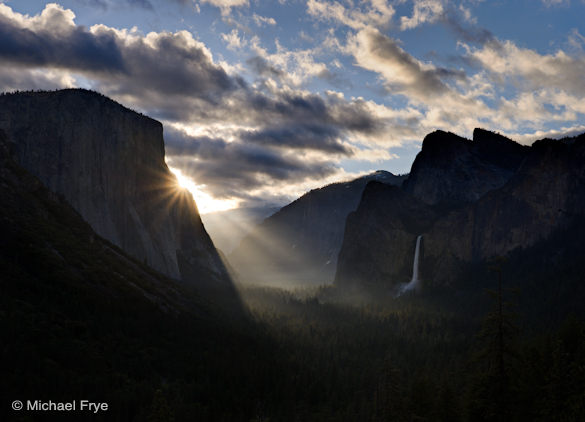
Sunbeams from Tunnel View, Saturday morning
First, some good news: the blog is back up! It took a little longer than I hoped, but all the posts have been restored. Most of the comments will eventually be restored also, but some, unfortunately, may be lost. Sorry for the inconvenience, and thanks for your patience and understanding!
Meanwhile, in Yosemite, the cool, wet weather has continued through most of May. Yosemite Valley has reached over 55 inches of total precipitation since July 1st last year, one of the wettest seasons on record. The Valley even received a couple of inches of snow around May 17th, while I was in Utah.
(more…)
by Michael Frye | May 18, 2011 | Announcements
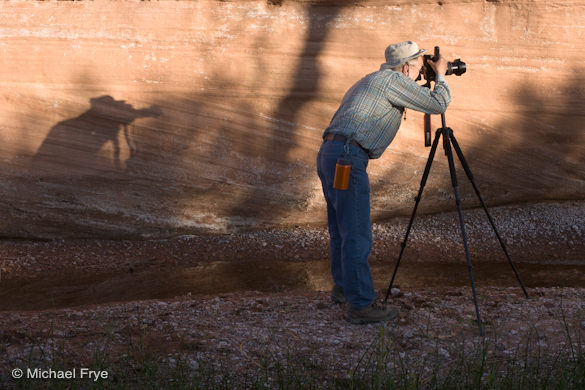
One of my workshop students in Courthouse Wash
First, a note about the blog. In transferring my domain to a new host, I encountered some problems. It may take a few days to get everything straightened out, and in the mean time I have a generic layout, and old posts will not be visible. I apologize for the inconvenience, and hope to get everything back up and running soon. If you have a subscription you should still get all the new posts.
But I wanted to write about the Moab Photography Symposium before too much time passed. This was my first time attending this event, and it was tremendous fun, with a relaxed, creative, and enjoyable atmosphere.
John Sexton gave a wonderful keynote presentation last Thursday night, and his talk about Ansel Adams on Saturday was amazing—really moving. I gave my presentation, Lessons From the Masters, on Friday morning, then got to see beautiful images from Joan Myers, and hear a fascinating discussion of photography design from Nat Coalson. On Saturday and Sunday we were treated to more great stuff from Jeff Vanuga, Tom Till, Steve Traudt, and Rory Tyler.
Friday and Saturday afternoons we broke into smaller groups for field workshops. I took my groups to Arches National Park (including Courthouse Wash and Balanced Rock) on Friday, and to beautiful Mill Creek on Saturday. Mill Creek is close to town, but this portion of it is not easy to find, and I would never have made it there without guidance from Bruce Hucko, the symposium director. A perennial creek flows through a classic red rock canyon, complete with petroglyphs and late-day reflections in the water.
I hope I get to come back. If you get a chance to attend this event next spring, don’t hesitate. You’ll have a great time.
by Michael Frye | May 16, 2011 | Announcements
I’ve encountered some problems in moving the blog from one host to another. I hope to having everything up and running again soon, but in the mean time, I apologize for the inconvenience. Please come back in a couple of days!
– Michael Frye
by Michael Frye | May 11, 2011 | Advanced Techniques, Yosemite Photo Conditions
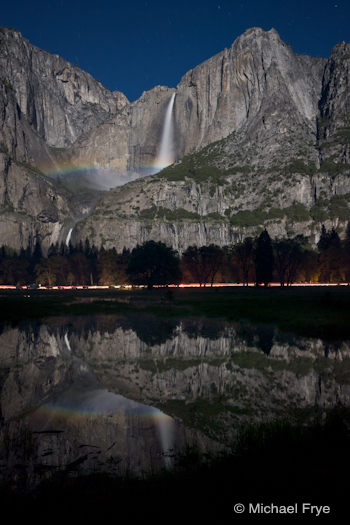
Lunar rainbow on Upper Yosemite Fall from Cook’s Meadow, May 2009
A full moon is coming up—Tuesday, May 17th, at 4:08 a.m. There should be plenty of spray in Yosemite Falls, so once again it should be possible to photograph a lunar rainbow, and I expect that many photographers will be in Yosemite trying to do just that. If you’re one of those people, last year I wrote some lunar rainbow photography tips that you might find helpful.
To learn the best times for photographing the moonbow, visit Don Olson’s web site. Good luck!
by Michael Frye | May 9, 2011 | Yosemite Photo Conditions
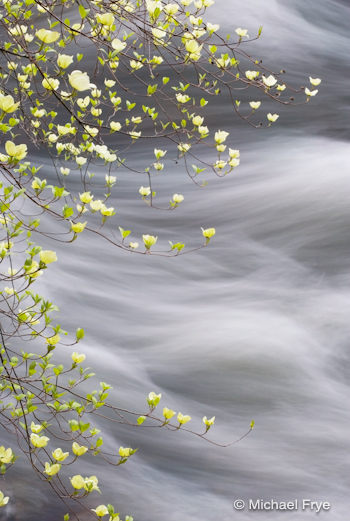
Emerging dogwood along the Merced River (from 2005)
I drove up to Yosemite Valley on Saturday for my reception at The Ansel Adams Gallery, and saw many dogwoods in full bloom—finally! I’d say about half of the blossoms in the valley had turned white, while half were still in that greenish-yellow stage. They’re changing quickly, and I expect that most of them are in full bloom today.
Meanwhile, the attendance at the reception was great—thanks to all of you who came! It was fun to actually shake hands with people who I’d previously only met in the comments of this blog, or on Facebook or Twitter. And it was nice to connect with old friends and acquaintances.
Now I’m on my way to Utah for the Moab Photography Symposium later this week. I’m reminded of that line at the end of the Coen brother’s movie Raising Arizona, something about finding a place “where all the children are happy, and all the parents are strong, and wise. Maybe Utah.” Of course—Utah. Here I come.
by Michael Frye | Apr 28, 2011 | Critiques
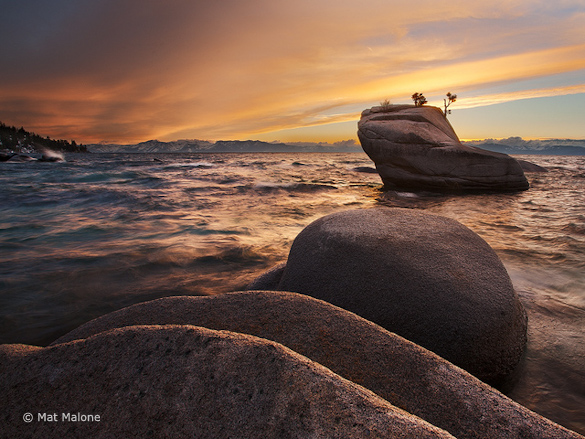
"Bonsai Waves" by Mat Malone
Composition
This week’s photograph was made by Mat Malone along the eastern shore of Lake Tahoe, Nevada. What first caught my eye about this image was the composition, with the layered, repeating shapes of the foreground rocks leading the eyes toward the more distant rock with the “bonsai” trees.
In some other critiques I’ve taken issue with foregrounds that didn’t seem to work, that really didn’t add to the photograph. This, on the other hand, is a strong foreground, something that contributes greatly to the overall effect of the image.
Mat told me, “When I was composing this I was really trying find an interesting set of lines that I could incorporate into the foreground. Along the shore I found a few large boulders next to each other that also lined up with the bonsai rock. Then it was just a matter of finding a perch for my tripod with a height that gave the rocks the separation I liked, and waiting for the light.”
(more…)
by Michael Frye | Apr 26, 2011 | Yosemite Photo Conditions
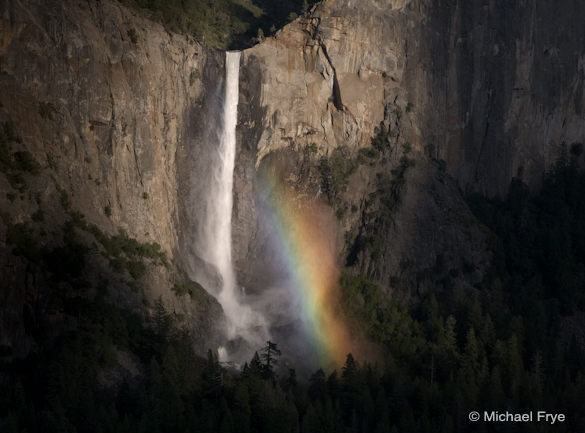
Rainbow on Bridalveil Fall
We had a great time last week during my Spring Yosemite Digital Camera Workshop. The weather was constantly changing, which made things challenging, but interesting. I made this photograph of Bridalveil Fall on Thursday as clouds alternately hid and revealed the sun, creating wonderful chiaroscuro light.
Cooler weather has slowed the snowmelt a bit, but the waterfalls are still going strong. The lower temperatures will actually help preserve the snowpack, and ensure that the water will continue to flow well into summer. Someone asked me recently about photographing the lunar rainbow during the July 14th full moon, and I think that might actually be possible this year. There will certainly be plenty of spray for rainbows during the May and June full moons.
A few cottonwood trees have started to leaf out, and I saw the beginnings of some dogwood blossoms. Although skies are supposed to be mostly clear this week, temperatures are expected to remain cool, which might slow the emergence of the dogwoods. At this point the dogwood peak looks to be at least two weeks away, although we could see some individuals in full bloom within a week.
It’s still shaping up to be a spectacular spring—but a late one.
by Michael Frye | Apr 18, 2011 | Yosemite Photo Conditions
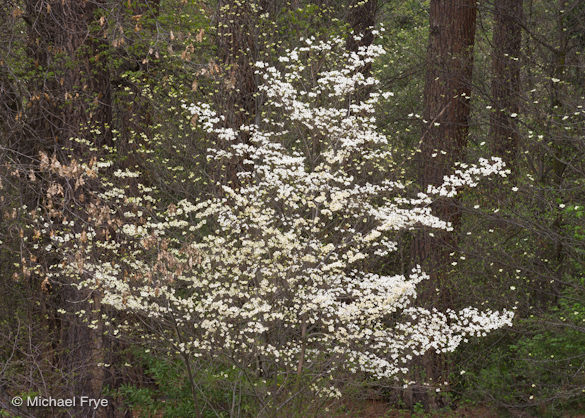
Forest dogwood, 2009 (part of my current exhibit at The Ansel Adams Gallery)
Just a quick note about conditions in Yosemite before I start my Spring Yosemite Digital Camera workshop tomorrow…
Spring is a bit behind schedule this year. A few trees have new leaves, and a few more have buds, but Yosemite Valley hasn’t really started greening up yet. And there’s no sign of dogwoods. Looks like the dogwood bloom will be at least a week or two late; it will probably start the first or second week of May.
Down in the Merced River Canyon, west of the park, you can still find some nice redbud, but they’re fading quickly. By this weekend most will have leafed out. There aren’t many other flowers to be seen either.
But here in Yosemite Valley the waterfalls are roaring. I watched spray being blown all the way from the bottom to the top of Upper Yosemite Fall, something I can’t recall ever seeing before. It must have been the wind, or perhaps some strange configuration of the ice cone at its base. But in any case the recent warm weather has increased the rate of snowmelt, and a lot of water is coming down.
The weather is supposed to turn cooler this week, so the flow will temporarily diminish a bit, but any warm spells between now and mid-June will create heavy runoff. I expect this to be a great year for waterfalls.
by Michael Frye | Apr 13, 2011 | Announcements
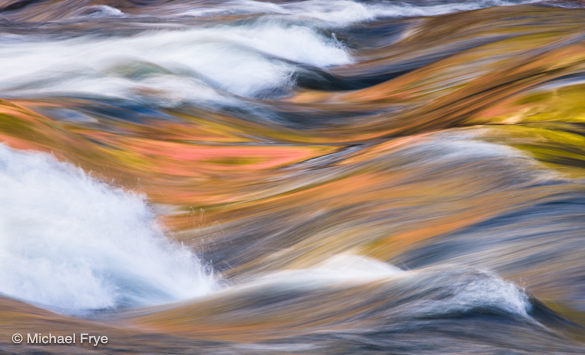
Waves and Reflections in the Merced River
Some great events coming up! Here are a few highlights:
Reflections on Yosemite Exhibit
The Ansel Adams Gallery, April 18 – May 25
I’m busily printing and matting images for this show, which starts on Monday. We’ve picked the photographs and layout, and I think it will look great. The exhibit will include lots of new work, as well as a few of my classic Yosemite images. Regular readers of this blog will recognize many of the photographs, but there’s nothing like seeing actual prints.
I hope some of you will get to stop by the gallery (next to the Visitor Center in Yosemite Valley) during the show, or better yet come to the reception on Saturday, May 7th, from 3 to 5 p.m.
(more…)










